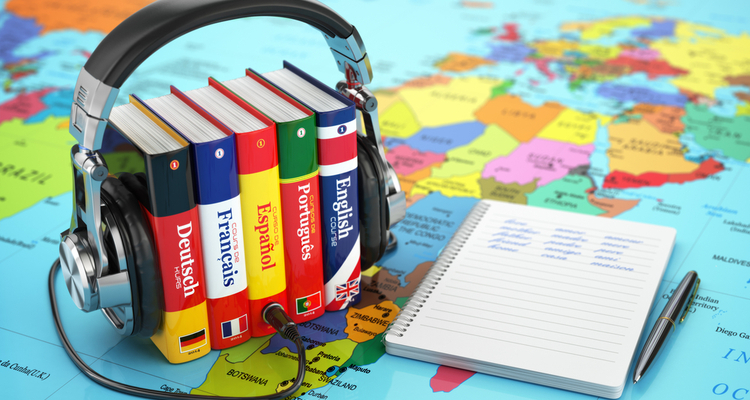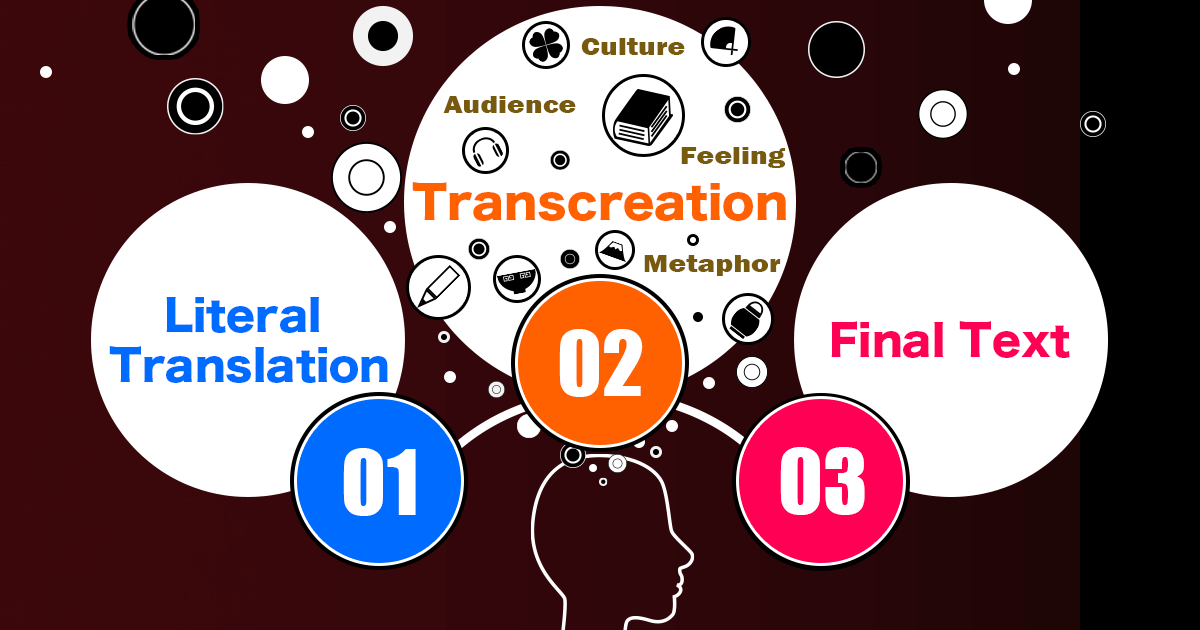Calculating how many languages are spoken worldwide is no easy task, considering many factors contribute to this figure.
This often has to do with political and cultural influences that often result in new languages and dialects forming. For instance, distinguishing between different dialects can be difficult when deciding if they should be considered separate languages. Moreover, the growing rate of language extinction complicates accurately determining living languages.
With globalization, language homogenization has increased, leading to the decline of some languages.
According to Ethnologue: Languages of the World, one of the most extensive catalogs, there are 7160 living languages worldwide. Examples of popular and widely spoken languages include English, Mandarin, Spanish, and Arabic.
However, numerous lesser-known languages are equally captivating and steeped in history and culture. For instance, Ainu, a language spoken by the indigenous people of northern Japan, or Ulwa, an endangered language spoken in Nicaragua and Honduras, may not be as well-known.
Let’s delve further into this subject and address the central question more comprehensively.
The Complexities of Dialects: How Many Variations of Languages Exist
Dialects present a significant challenge when accurately calculating the total number of languages spoken worldwide. But what is a dialect exactly?
The term refers to a variation of a language that is specific to a certain geographic area or local group. Their emergence can be caused by different factors, ranging from social to geographical to historical ones.
Dialects can be both advantageous and problematic. While they can preserve the unique qualities of a language and offer insight into a region’s cultural diversity, it can be challenging to decide if a particular dialect should be classified as a separate language.
This issue becomes especially prominent during language classification, which involves assigning a language to a specific category based on shared linguistic features.
The number of language variations is not a simple matter. There is no easy answer since the linguistic features defining a dialect can be ambiguous and open to interpretation.
For example, Mandarin Chinese has several dialectal variants, each with its own unique characteristics. In contrast, languages like Icelandic and Finnish have fewer dialects due to their relative isolation from other languages throughout history.
In summary, determining the number of living languages worldwide is not just a matter of counting them. It requires careful examination of various factors, including dialects. The world’s linguistic landscape is continually evolving, as are the number of dialects and language variations. As a result, accurately identifying the number of distinct language varieties remains an ongoing and intricate process.
Language Diversity in India: How Many Languages Are There?
India is renowned for its vast linguistic landscape, boasting more than 19,500 languages or dialects recorded by the Language Census of India 2011. This immense diversity of languages reflects the country’s social and cultural history but also geographical and political divisions.
The origins of India’s language diversity can be traced back to its ancient civilization and the influx of different tribes and communities over time. The most popular languages in India are the descendants of the Indo-Aryan language group. Other prominent language families include Dravidian, Austroasiatic, and Tibeto-Burman.
The most spoken language in India is currently Hindi. It is spoken by 400 million Indians, most of whom live in the northern and central regions.
Other official languages of India are:
- Bengali
- Telugu
- Marathi
- Tamil
- Urdu
- Gujarati
- Kannada
- Punjabi
- Oriya.
Each language has many speakers and is commonly used in official communication, educational institutions, and media outlets.
India’s social and cultural landscape was significantly influenced by language. As a matter of fact, each regional language is closely tied to distinct ethnic and local identities. These regional languages are essential for preserving India’s cultural variety.
During colonial times, English was promoted as the language of power, marginalizing other Indian tongues. Today, language still serves as a tool for political and social control in India as different regions and communities strive to assert their linguistic and cultural identities. India’s varied language landscape has also led to a rich literary tradition, with each language boasting its own unique literary figures and movements.
In conclusion, India’s linguistic diversity is integral to its cultural identity and history.
While it has posed challenges regarding political and social tensions, India’s many languages continue to be a source of pride and inspiration for its people, shaping its unique literary and cultural traditions.
Multilingual Europe: How Many Languages Are Spoken?
Europe is renowned for its remarkable linguistic diversity, with many languages coexisting side by side. This complexity can be attributed to the continent’s long migration, colonization, and cultural exchange history.
While there are 24 official languages within the European Union and other 26 in non-EU European countries, this number does not reflect the vast regional and minority languages spoken across the continent.
The European Charter for Regional or Minority Languages identifies over 60 such languages that are closely linked to particular regions or ethnic groups. These tongues are essential in preserving cultural identity and heritage; examples include Welsh, Gaelic, Breton, Basque, Galician, Catalan, Occitan, and Frisian.
Another major factor shaping Europe’s linguistic landscape is immigration. There are not millions of Europeans who speak languages that are not native nor official in the country where they live. In certain areas, these immigrant languages have become dominant in local communities.
Multilingualism is common in Europe, with many individuals speaking two or more languages fluently. This is largely due to the language policies and educational systems in place across the continent, which encourage the learning and using multiple languages. As a result, many Europeans are multilingual from an early age, becoming an essential part of their identity.
With over 60 regional and minority languages, as well as immigrant languages, spoken across the continent, multilingualism has become a defining feature of Europe. To ensure that this remains the case for years to come, European governments continue to promote multilingualism through their policies and education systems.
Native American Languages: How Many Are Still Spoken Today?
Indigenous American societies possess a rich heritage of linguistic and cultural variety. Ranging from the Cherokee to the Apache, the United States acknowledges more than 500 federally recognized Indian tribes, with each exhibiting distinct languages, practices, and ideologies. These languages, firmly anchored in spoken traditions, serve as crucial elements in safeguarding the cultural and spiritual legacy of Native American groups.
Regrettably, numerous Native American languages have faced endangerment throughout the years due to colonialism, forced relocation, and imposed assimilation. Historically, Native American children frequently faced separation from their families and were placed in boarding schools where they endured penalties for using their native languages.
This has devastated many Native American communities, leading to the loss or near extinction of some languages.
However, hope remains for the future of Native American languages. Programs are now dedicated to preserving these languages through education and revitalization efforts.
One example of successful efforts to preserve and promote Native American languages is the Navajo Language Renaissance. Initiated in the 1980s, this endeavor aimed at rejuvenating the language that had been diminishing for an extended period.
The Navajo Nation implemented a language immersion initiative, and currently, more than 170,000 individuals speak the language.
Other initiatives include:
- language nests for children
- courses at tribal colleges and universities
- programs that work with elders to document traditional stories and songs.
These efforts have helped to ensure that Native American linguistic heritage is not lost forever.
The loss of Native American languages represents a significant loss of cultural heritage and indigenous knowledge. However, ongoing efforts by Native American communities have helped to ensure that this rich linguistic landscape will continue to be passed down from generation to generation.
Africa’s Linguistic Cosmos
The African continent boasts an astounding variety of linguistic richness, encompassing over two thousand separate languages. These languages belong to a collection of more than two hundred language families, each possessing distinct grammatical structures and features.
The remarkable linguistic diversity in Africa can be attributed to the continent’s complex history. Migration, colonization, and cultural exchange have all played a role in developing numerous languages over time. Moreover, Africa hosts unique language families not found elsewhere, including Afro-Asiatic, Nilo-Saharan, and Khoisan.
In African societies, language constitutes a crucial element of cultural identity and helps maintain local customs and historical records. Regrettably, numerous African languages face endangerment as a result of globalization, urbanization, and the imposition of European languages during the colonial era. As a result, some languages may soon face extinction unless steps are taken to protect them.
Despite these challenges, efforts are being made to preserve and promote African languages. Organizations such as the African Academy of Languages and the Centre for African Language Learning in South Africa work to develop and promote African languages. In addition, many African governments have recognized the importance of linguistic diversity and have implemented policies to protect and promote local languages.
The Linguistic Landscape of South-East Asia
The South-East Asian region boasts a remarkably diverse linguistic environment, encompassing hundreds of languages. These range from local and regional dialects to widely spoken international languages such as Chinese, English, Tamil, Malay, Vietnamese, and Khmer.
This linguistic variety can be attributed to ancient migrations, invasions, and colonial influences. Consequently, the area is home to multiple linguistic groups, each possessing its distinct culture and history.
The Chinese language has had a profound influence on the region, leading to its integration into various countries’ cultures and societies. This has resulted in the emergence of several Chinese dialects across South-East Asia, including Hokkien, Cantonese, and Hakka. English serves as another prominent language in the region and often functions as a common medium among speakers of different languages.
Additionally, the region hosts numerous minority and regional languages, such as Acehnese, Batak, Cham, Dayak, Karen, and Lisu. These languages are intimately connected with their communities’ cultural identities and play a vital role in preserving local customs and heritage.
Regrettably, many of these languages face endangerment due to globalization and the dominance of major international languages. As a consequence, several minority and regional languages may soon vanish unless proactive measures are taken to safeguard them.
Concluding Thoughts on Language Diversity and Complexity
Tracking the number of languages spoken worldwide is a complex task, full of intricate political and cultural dynamics. As new languages emerge and existing ones gradually become extinct, it can be difficult to accurately categorize dialects under a specific linguistic family. This process is further complicated because many languages are not officially recognized or documented.
In addition, multiple variations of the same language are often spoken in different regions, making it even more challenging to accurately count them all. The sheer number of languages spoken worldwide also presents another challenge. According to Ethnologue, there are over 7,000 living and dynamic languages. The vast linguistic diversity can make it challenging to monitor all languages and comprehend their subtleties. This is particularly important for providers of translation services. Keeping a record of global languages is a continuous endeavor that necessitates meticulous attention and profound linguistic knowledge. Acknowledging the intricacies of this undertaking and valuing the language variety across different cultures is essential for us.
Subtitles

Professional and Accurate Subtitle Services for your Videos.
- Video subtitles specifically tailor-made for improving accessibility.
- Using highly experienced subtitlers with years of industry experience.
- Professionally written and expertly timed.
Translation

We help the world’s top companies translate their content in over 73 languages!
- We localize content for internet websites, games, travel, cryptocurrencies, and more
- Expand your global audience by adding different languages.
- We work only with qualified translators and experienced content creators
Audio translation

Ensuring full accessibility for Blind and visual impaired audiences.
- Visual descriptive events as they occur in the video.
- Working with top audio describers to perfectly describe what is happening on-screen
- Professional sound recording.









